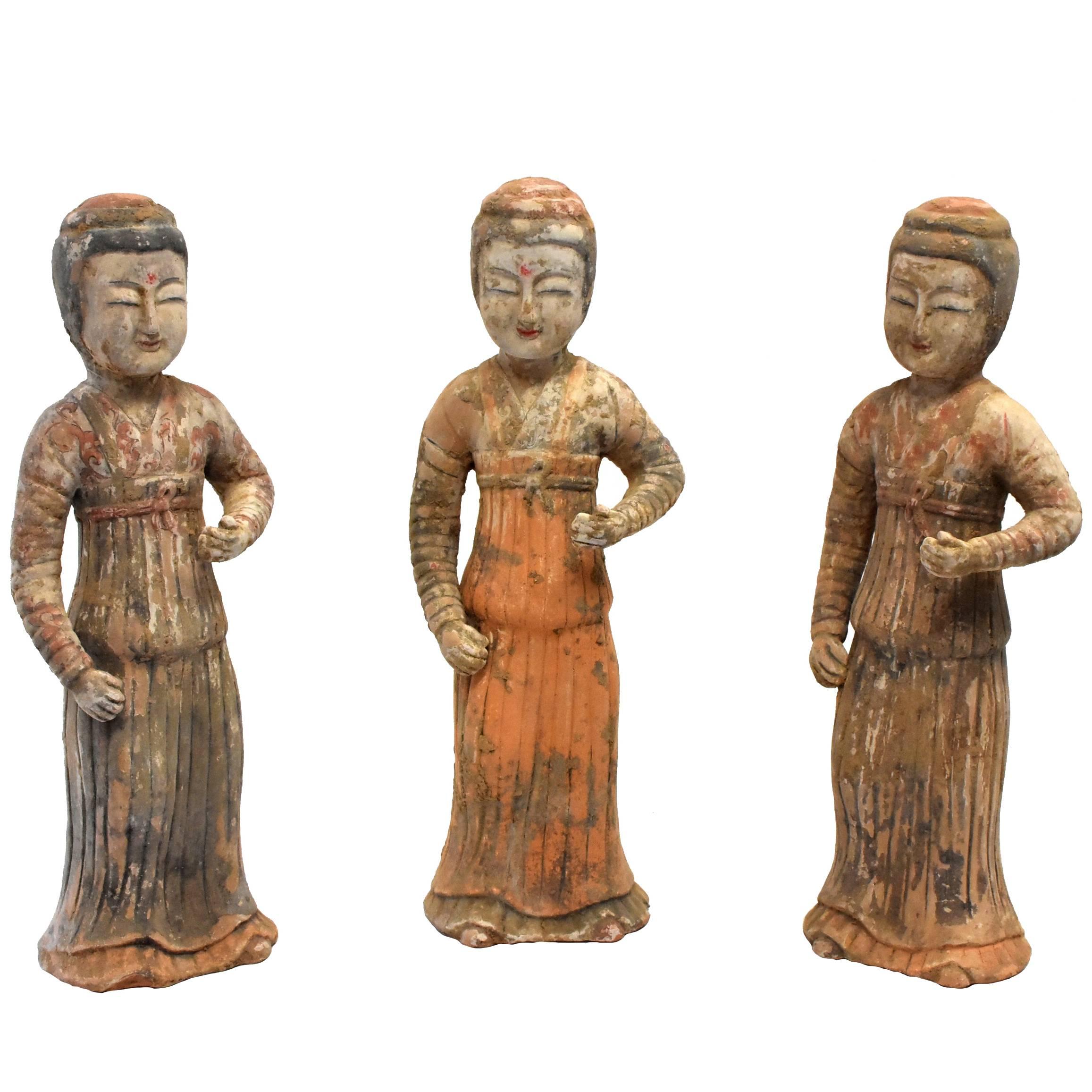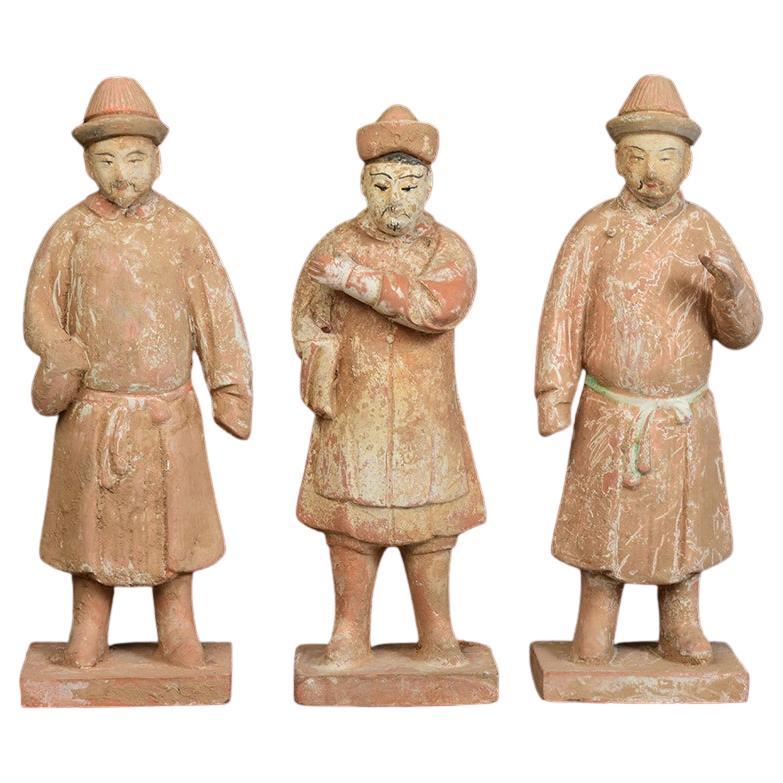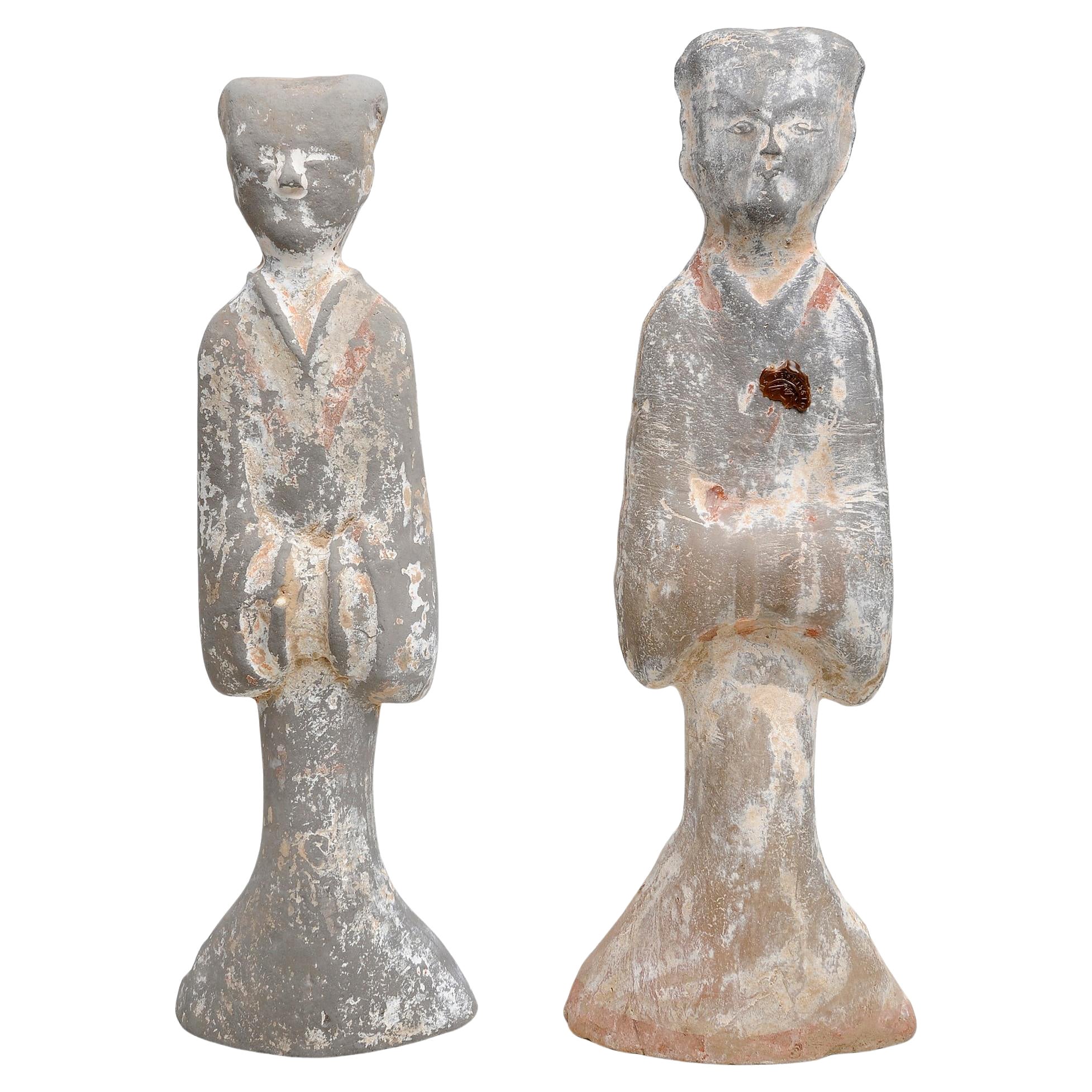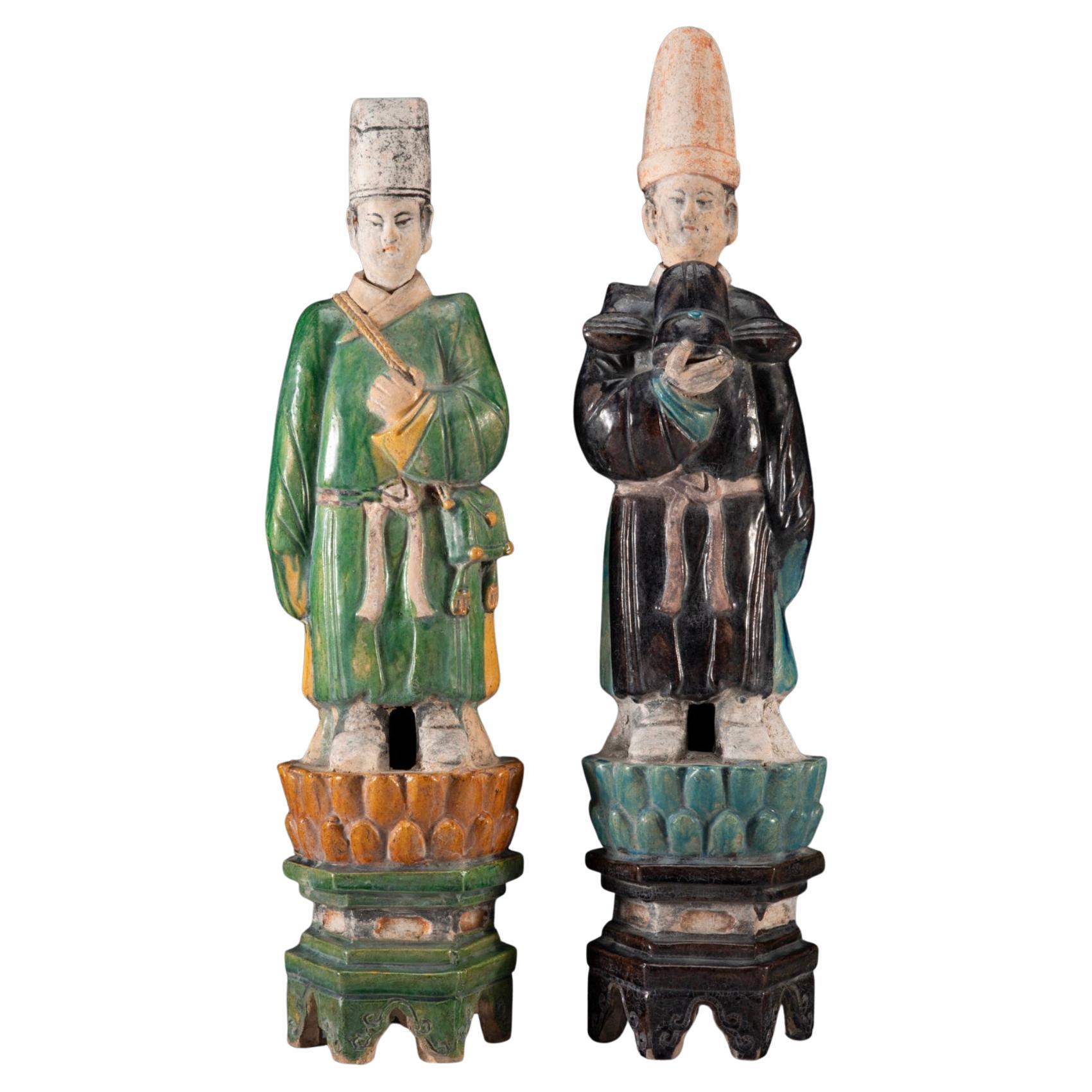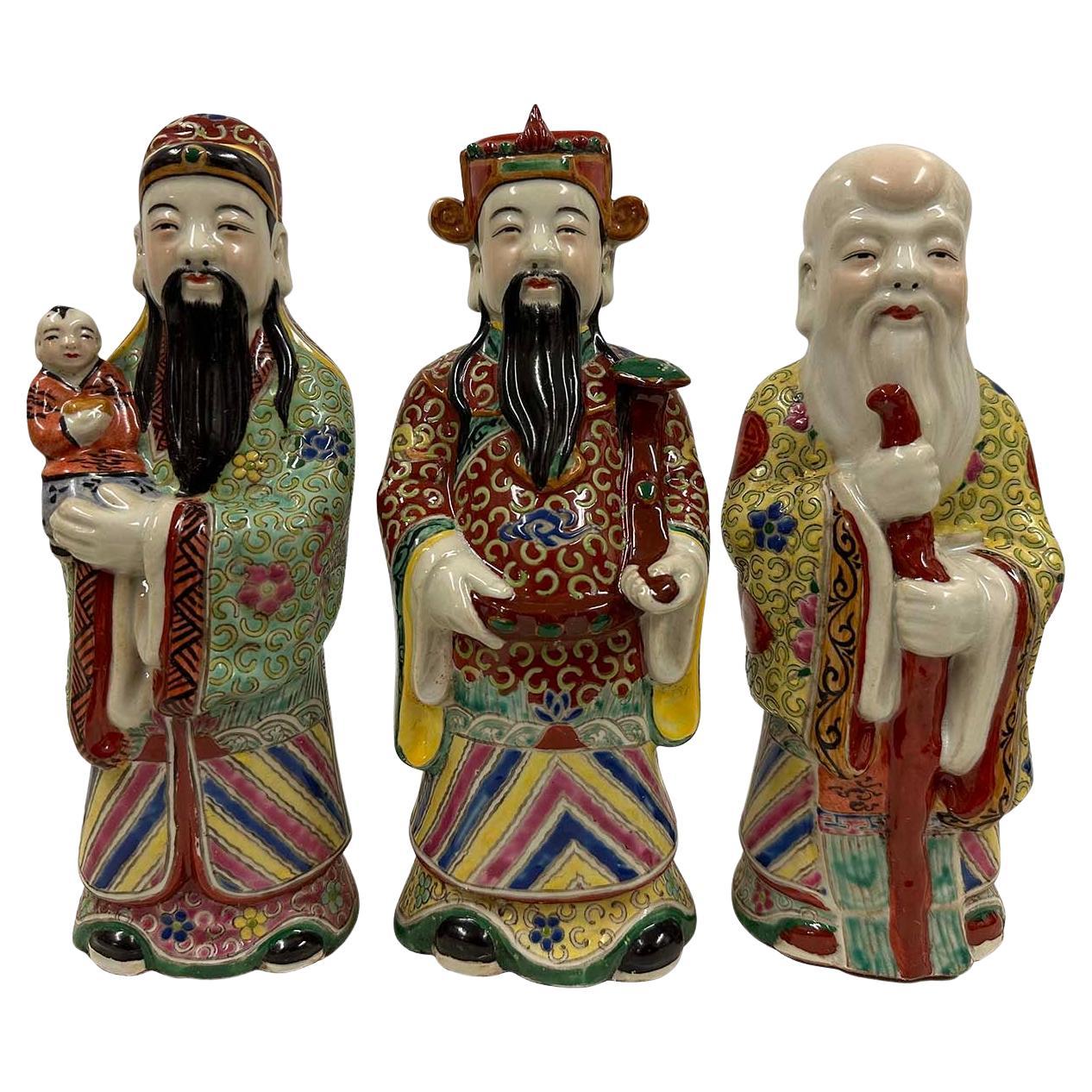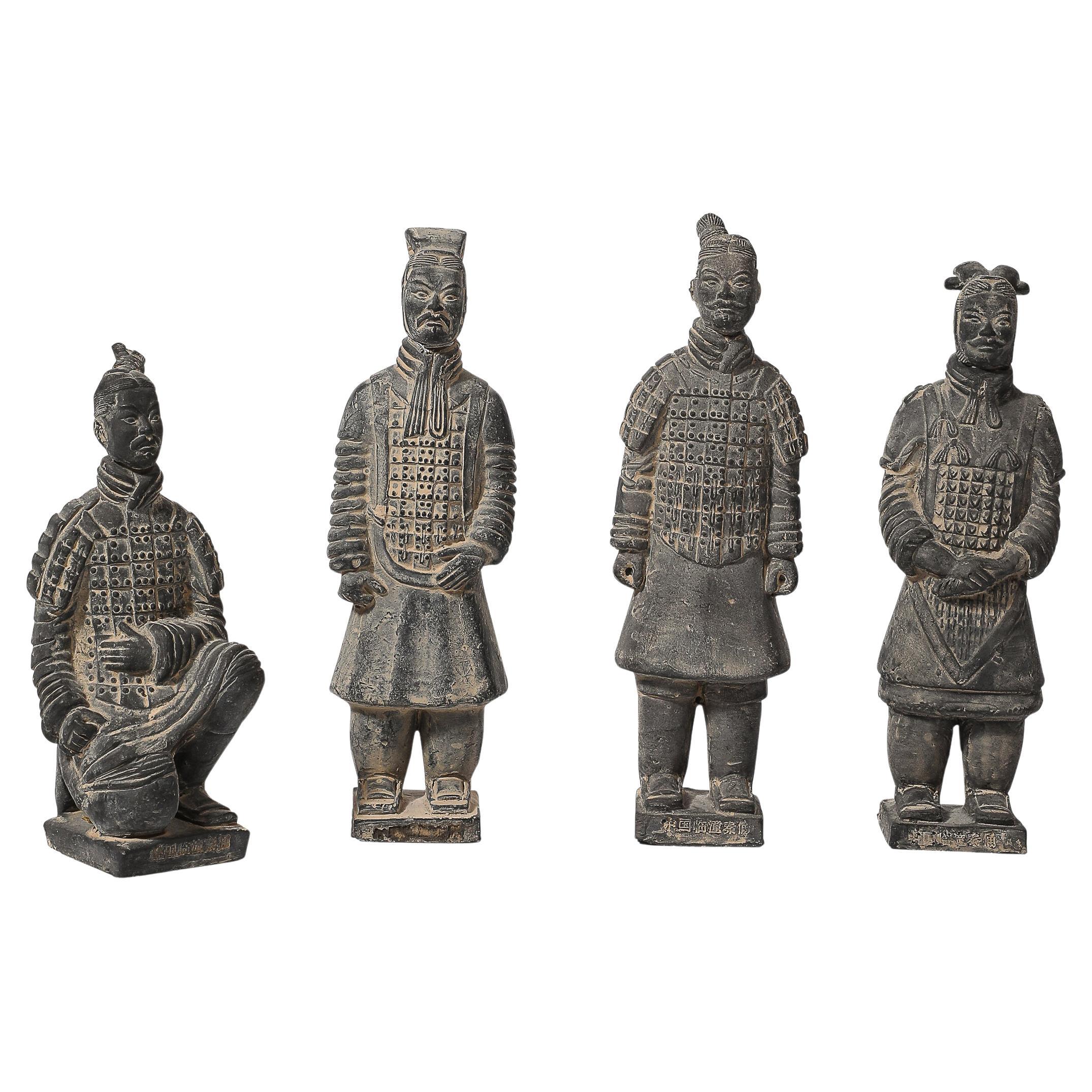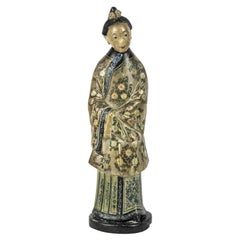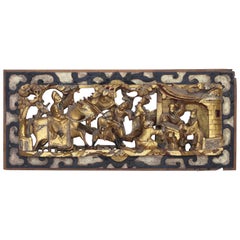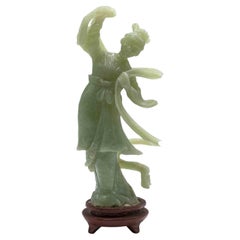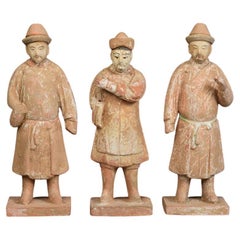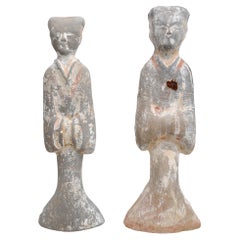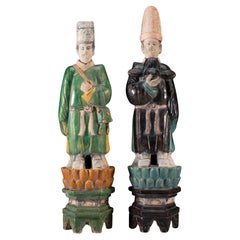Items Similar to Three Ancient Terracotta Sculptures, China Ming Period
Want more images or videos?
Request additional images or videos from the seller
1 of 6
Three Ancient Terracotta Sculptures, China Ming Period
$7,398.08per set
$10,568.68per set30% Off
£5,448.67per set
£7,783.81per set30% Off
€6,160per set
€8,800per set30% Off
CA$10,064.50per set
CA$14,377.86per set30% Off
A$11,183.88per set
A$15,976.98per set30% Off
CHF 5,860.47per set
CHF 8,372.11per set30% Off
MX$137,150.41per set
MX$195,929.15per set30% Off
NOK 74,746.93per set
NOK 106,781.33per set30% Off
SEK 70,319.17per set
SEK 100,455.96per set30% Off
DKK 46,895.13per set
DKK 66,993.05per set30% Off
Shipping
Retrieving quote...The 1stDibs Promise:
Authenticity Guarantee,
Money-Back Guarantee,
24-Hour Cancellation
About the Item
This Chinese terracotta group of figures is made up of three figures of Chinese dignitaries in glazed green and ocher terracotta on hexagonal bases and removable heads.
From the dresses with wide sleeves and workmanship, as well as from the cylindric flat hats, we understand that the statues are of Chinese origin, Ming Era. Good conditions.
This object is shipped from Italy. Under existing legislation, any object in Italy created over 70 years ago by an artist, designer or craftsman who has died requires a license for export regardless of the work’s market price. The shipping may require additional handling days to require the license according to the final destination of the object.
- Dimensions:Height: 1.19 in (3 cm)Width: 18.51 in (47 cm)Depth: 36.23 in (92 cm)
- Sold As:Set of 3
- Materials and Techniques:
- Place of Origin:
- Period:
- Date of Manufacture:16th Century
- Condition:Wear consistent with age and use. This Chinese terracotta lot is made up of three figures of Chinese dignitaries in glazed green and ocher terracotta on hexagonal bases and removable heads. From the dresses with wide sleeves and workmanship, as well as from the cylindric flat hats,.
- Seller Location:Roma, IT
- Reference Number:Seller: M-1042611stDibs: LU2698317064761
About the Seller
4.7
Platinum Seller
Premium sellers with a 4.7+ rating and 24-hour response times
Established in 2015
1stDibs seller since 2017
967 sales on 1stDibs
Typical response time: 1 hour
- ShippingRetrieving quote...Shipping from: Roma, Italy
- Return Policy
Authenticity Guarantee
In the unlikely event there’s an issue with an item’s authenticity, contact us within 1 year for a full refund. DetailsMoney-Back Guarantee
If your item is not as described, is damaged in transit, or does not arrive, contact us within 7 days for a full refund. Details24-Hour Cancellation
You have a 24-hour grace period in which to reconsider your purchase, with no questions asked.Vetted Professional Sellers
Our world-class sellers must adhere to strict standards for service and quality, maintaining the integrity of our listings.Price-Match Guarantee
If you find that a seller listed the same item for a lower price elsewhere, we’ll match it.Trusted Global Delivery
Our best-in-class carrier network provides specialized shipping options worldwide, including custom delivery.More From This Seller
View AllChinese Statuette, Early 20th Century
Located in Roma, IT
Chinese Statuette is an original set of decorative object realized in the early 20th century.
Original colored terracotta.
The small sculpture...
Category
Early 20th Century Chinese Figurative Sculptures
Materials
Terracotta
$571 Sale Price
30% Off
Vintage Chinese Wood Relief
Located in Roma, IT
Chinese Wood Relief is an original artwork realized by an anonymous manufacturer in the early XX century.
Wooden carved gold painted red lacquer.
Good co...
Category
Early 20th Century Chinese Figurative Sculptures
Materials
Wood
Vintage Chinese Wood Relief
Located in Roma, IT
Chinese Wood Relief is an original artwork realized by an anonymous manufacturer in the early XX century.
Wooden carved gold painted red lacquer.
Goo...
Category
Early 20th Century Chinese Figurative Sculptures
Materials
Wood
$411 Sale Price
30% Off
Vintage Chinese Serpentine Sculpture, China, Early 20th Century
Located in Roma, IT
Vintage Chinese serpentine sculpture is a traditional decorative object realized in china in the early 20th century.
Serpentine m...
Category
Early 20th Century Japanese Figurative Sculptures
Materials
Marble, Serpentine
$1,261 Sale Price
30% Off
Ancient Terracotta Sculpture, 17th Century
Located in Roma, IT
Ancient terracotta hand painted sculpture realized in Italy in 17th Century.
Very good condition, placed on a marbelized wooden base.
Category
Antique 17th Century Italian Figurative Sculptures
Materials
Terracotta
Ancient Japanese Kutani Vases, 19th Century
Located in Roma, IT
These Japanese Kutani Vases are refined decorative objects realized by a Japanese artist in the 19th century.
This beautiful set includes two ...
Category
Antique 19th Century Japanese Vases
Materials
Ceramic
$739 Sale Price / set
30% Off
You May Also Like
Chinese Terracotta Court Ladies Han Style Set of Three
Located in Somis, CA
A set of beautiful terracotta court ladies in the Han dynasty style. Featured are governesses whose jobs are to train the ladies of the house all manners and etiquette, as well as th...
Category
20th Century Chinese Tang Sculptures and Carvings
Materials
Terracotta
$660 Sale Price / set
40% Off
Ming Dynasty, A Set of Antique Chinese Pottery Court Man
Located in Sampantawong, TH
A set of Chinese pottery standing court man.
Age: China, Ming Dynasty, A.D. 1368 - 1644
Size: Height 25.9 - 27.4 C.M. / Width 8.9 - 9.1 C.M.
Condition: well-preserved old burial...
Category
Antique 15th Century and Earlier Chinese Antiquities
Materials
Pottery
$1,920 Sale Price / set
20% Off
Antique Terracotta Chinese Figures Statues
Located in Alessandria, Piemonte
Antique terracotta figures Han style from my private collection: collected about 35 years ago and never exibited to the public.
One is very ancient, the other one is more recent. The prices are different, but an expert can understand the value. A certificate Oxford test would be needed: I don't have it, so I'm accepting offers: I want to close my activities and I have a beautiful Chinese collection, see the other ones published under my name enrica pasino.
Category
Antique 15th Century and Earlier Chinese Han Antiquities
Materials
Terracotta
$6,004 / set
Ming Dynasty Sancai Glazed Dignitary Tomb Figures
Located in Dallas, TX
A Pair of Chinese Enameled Sancai Glazed Pottery Attendant Figures Representing Dignitaries.
Ming Dynasty Period. Circa 1600AD
Dimensions; 23 x 5.5 x 5.25 inches (58.4 x 13.7 x 13.3 ...
Category
Antique 16th Century Chinese Ming Figurative Sculptures
Materials
Pottery
Early 20th Century Chinese Fu Lu Shou Feng Shui Trio Gods Figurines with Marks
Located in Pomona, CA
This beautiful set of three antique porcelain statues features the Chinese deities Fu, Lu, Shou, commonly known as the Fu Lu Shou gods in folks China. Each statue represents a diffe...
Category
Early 20th Century Chinese Chinese Export Figurative Sculptures
Materials
Porcelain
Set of Four Chinese Qin Shi Huang Mausoleum-Style Terracotta Warrior Sculptures
Located in New York, NY
This set of four Qin Shi Huang Mausoleum-style terracotta warrior sculptures is a captivating homage to one of China's most famous archaeological discoveries. Crafted in the 20th cen...
Category
20th Century Chinese Figurative Sculptures
Materials
Terracotta
More Ways To Browse
Ancient Sculptures
Ancient Terracotta
Terracotta Head
Chinese Sleeves
Chinese Head Sculpture
Antique Italian China
Sculpture Head Terracotta
Antique Terracotta Head
Antique Terracotta Statue
16th Century Dress
Chinese Hexagon
Antique Chinese Hats
Ming Chinese Figures
Chinese Glazed Terracotta
Italian Terracotta Statues
Asian Green Statues
Ming Statue
Terracotta Hexagon
